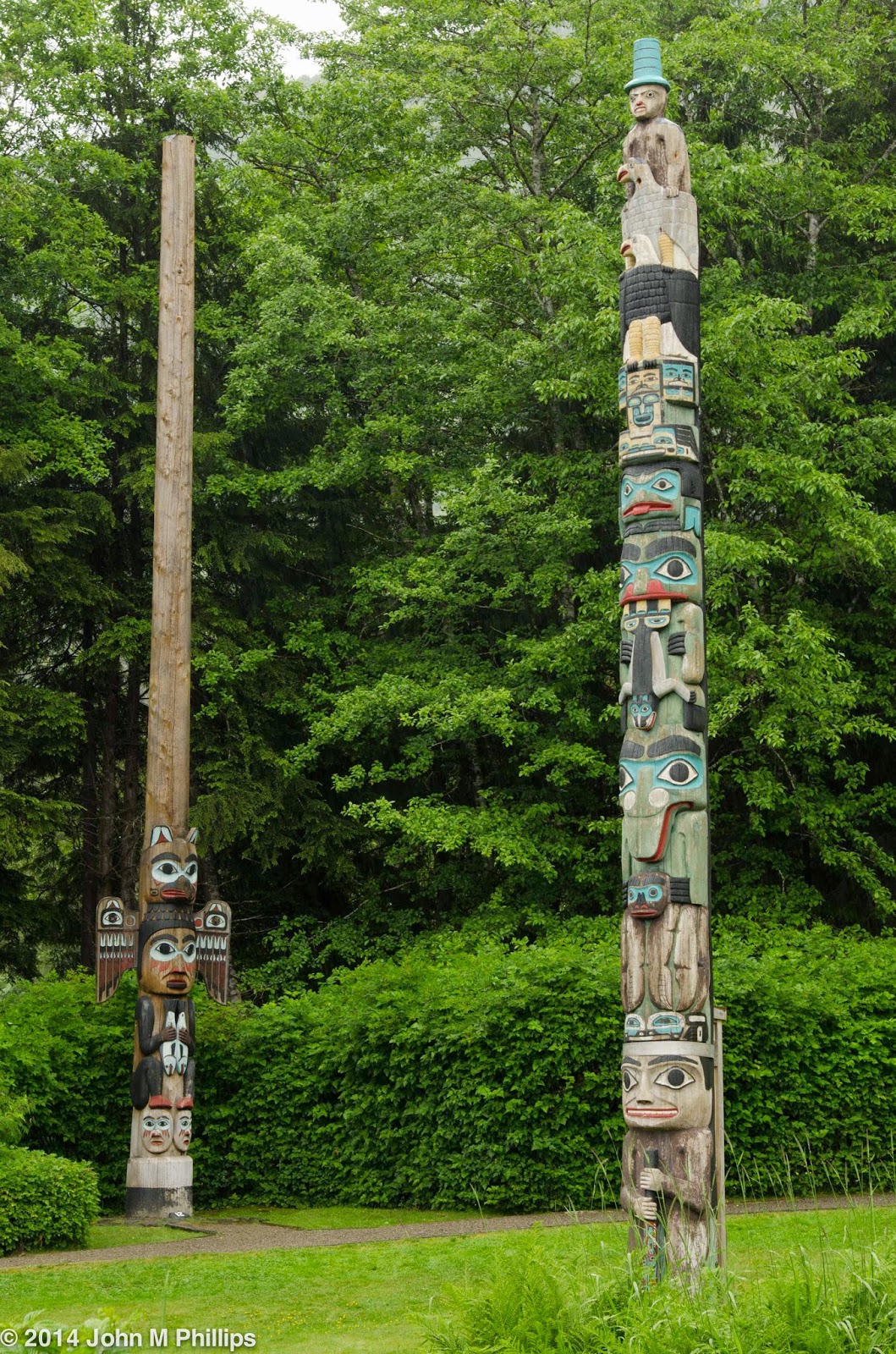I found myself shooting two different sorts of seascapes, one kind that included sunlight or at least ample light and another that made the best of cloudy, lower light situations. Here, first, are some examples of shots that included sunshine or at least well illuminated scenes. I took this first photo in Glacier Bay National Park as we were approaching one of the glaciers. I liked how the foreground mountains framed the higher, snow-covered peak in the background.
I took this second shot also in Glacier Bay, looking back down the fjord following a visit to one of the glaciers. I liked how the clouds were being reflected in the relatively calm, but ice-strewn waters of the fjord.
Here is another shot from Glacier Bay taken with an almost cloudless sky. I thought the small island in the lower right helped the overall composition, although it would have been better if the top of the islet had been below the water horizon.
I especially liked this fourth shot that I took as we were leaving Skagway en route to Juneau. Skagway had been very overcast and wet, and everyone was complaining that the sky was clearing up only after we had endured a very rainy day in Skagway. (By the time we got to Juneau, the clouds and rain had returned, of course.)
In this shot I allowed the cumulus clouds to dominate the image, but noted that there were two ships ahead of us that the mountains on either side served to draw attention to. The resolution on this shot was quite good also.
I took the balance of the shots on this post in much cloudier, darker conditions, nearly all from the balcony of our stateroom, as we were moving from one port of call to another. The low-light conditions were a bit more challenging. The ship was moving (usually at around 15-20 knots, I believe) which meant that the scene was also moving and I had to be a little concerned about subject blur. In addition, the low light conditions meant that I had to cope with slower shutter speeds and more ISO "noise." There is simply more noise in lower light as the sensor has to rely on fewer photons to establish an image. But enough of excuses.
I took this first, moody shot in early morning, as we were approaching Glacier Bay National Park from the southwest.
Here I set the horizon near the middle of the frame. That's usually a no-no; however, here the dark clouds didn't hold much interest, but I wanted to include enough of them to create the mood that I think this shot conveys.
Contrast that with the following couple of shots in which I thought the clouds added a lot to the overall composition. In these shots I placed the horizon close to the bottom of the image to put more focus on the clouds.
I especially liked the clouds and overall lighting in this second shot. I considered cropping out the upper portion of the image but decided that keeping it in the shot helped to emphasize the lower bank of clouds.
There there were a number of shots that featured the many islands situated at varying distances from the ship (and my camera).
I worked a lot with this last shot to create some definition in the trees on the island in the lower middle of the image. I thought this shot also worked as a black & white.
Here's another shot that I thought worked OK as a black & white.
As we were cruising down the British Columbia coast on the evening before our arrival in Vancouver, I spied this lighthouse and got a fairly sharp shot, despite the ship's cruising speed.
Playing around with the shot a bit, I cropped it down some and converted all of the colors to black & white except for the buildings' red roofs and the accompanying yellow tanks.
I thought it worked as sort of a novelty shot.
Finally, here are my two favorite photos from this group, based on their color and composition. This first was the only one of this group not taken from the cruise ship. Instead, it was shot from the jet boat that we took in Juneau to get to the whale watching location. A close look reveals that there is another boat located on the horizon near the center in the low mist hanging over the water.
This second photo was shot in the late evening as the ship was cruising from Juneau toward Ketchikan. It was late, after 10:30 pm, but obviously the sun had not yet set. I liked the colors of the sky, the rows of mountains with clouds further back, and the bright white line that the sea was making at the horizon. For the record, this low light photo was shot at f/4 with a shutter speed of 1/50 second and an ISO of 400.
John



















































